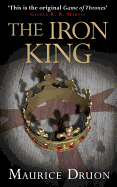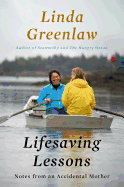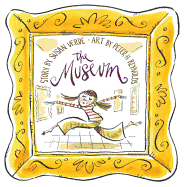 Since 1999, Mike Greenberg has been half of the ESPN sportscasting duo Mike and Mike in the Morning, and he frequently anchors ESPN's news program SportsCenter. Before joining ESPN, Greenberg was a sports anchor, reporter, talk show host and syndicated sports columnist.
Since 1999, Mike Greenberg has been half of the ESPN sportscasting duo Mike and Mike in the Morning, and he frequently anchors ESPN's news program SportsCenter. Before joining ESPN, Greenberg was a sports anchor, reporter, talk show host and syndicated sports columnist.
Losing his annual NCAA men's "Bracket Wager" to co-host Mike Golic resulted in his milking a cow in studio. While humorous, this was not unexpected from "Greeny." What many may find surprising, however, is his debut novel. Greenberg's already written two books (Why My Wife Thinks I'm an Idiot: The Life and Times of a Sportscaster Dad; Mike and Mike's Rules for Sports and Life), but All You Could Ask For (see our review below) is his first go at fiction. The surprising part is that the novel is a tale of three women, alternating between each of their perspectives. It's ambitious to take on the perspective of one woman, but three?
Greenberg explained: "I received some really good advice from my friend, the novelist Jane Green, when I started writing. She told me if I really, really knew my characters, they would write themselves. And she was right. In my mind I know all three of these women, I know how they look, how they dress, how they sound, and so from that perspective I wouldn't say any of them was any harder than any other."
Greenberg also gained insight from a three-woman focus group. It helped to have some input with things like generational lingo. But through the writing, the research, the focus group, what all did Greenberg learn about women?
He said, "If there is one thing I have learned through this process, it is that men and women are not nearly as different as we all like to think. Perhaps in the small ways we are, but in the ways that matter we are very much alike. Writing dialogue for women is a bit of a challenge, but writing emotions, fears, joy, friendship--those things are human, they aren't limited by gender."
So if the genders aren't really all that different, would All You Could Ask For change if its theme of friendship was featured three men, instead of three women? "That's the first time I've been asked that and it's an excellent question," Greenberg said. "I think the overriding themes would have been much the same, as I said, but certainly a lot of the sensibility would be different. Katherine, for instance, being a woman in a 'man's world' clearly defines a great deal of who she is. That stuff would have to be very different."
Greenberg himself works in the "man's world." It is probably more infused with testosterone than the average workplace, so how does everyone there feel about his "women's" fiction?
"So far everyone has been great," he said. "And the truth is, the biggest change I have seen in the 20 years I have been covering sports is in the number of women that have joined the party. So, while there is still plenty of testosterone, there is an increased amount of estrogen as well."
 Inspiration came to Mike Greenberg from all directions. He wanted to write fiction as a young boy after reading John Irving, and the idea to have alternating perspectives came from Nick Hornby's A Long Way Down. "I loved that book and I loved that constant change of voice when I read it, that's where I got the idea," Greenberg said.
Inspiration came to Mike Greenberg from all directions. He wanted to write fiction as a young boy after reading John Irving, and the idea to have alternating perspectives came from Nick Hornby's A Long Way Down. "I loved that book and I loved that constant change of voice when I read it, that's where I got the idea," Greenberg said.
Having an idea is one thing, but finding the time to form that idea into a story can be a completely different beast--especially when you're a sportscaster, husband and father. So how does Greenberg do it? "I write in bursts that sometimes result in a paragraph or two, other times four or five pages. I will look up and be surprised at how much I have written, primarily dialogue--that tends to move more quickly. Then I walk around or check my e-mail for a few minutes, then try again. I can usually get two or three of those spurts in a day, then I print what I have written and edit it by hand in bed at night."
And sometimes fitting those "spurts" into the day takes some creativity: writing on an airplane and off-air in the studio, editing in bed. Greenberg recalled, "I wrote some of it at the top of Smuggler Mountain in Aspen. That is my favorite place in the world; there is an observation deck where you can see what seems like forever. So I hiked up with a laptop in my backpack and wrote a few scenes up there."
As inspirational as Smuggler Mountain was, there's one major inspiration for All You Could Ask For: Heidi Armitage. Greenberg said, "Heidi was our friend, one of my favorite people, one of my wife's closest friends. She was an outdoorsy, funny, sexy, soccer mom with a twinkle in her eye who was dealt an impossible hand by breast cancer at the age of 43. The book was written in her memory." However, Heidi isn't actually embodied in any of the three characters. "I think every author puts a little of himself, or herself, into every character, so I'd say each of them is a little like me, but nothing at all like Heidi. Actually, Brooke is the most like me, which is ironic in that she is my wife's least favorite character. But Brooke just wants everything to be perfect, and if she is in a bit of denial, then that is alright with her. I'm that way--when there is trouble, I yearn to move past it, to resolve it any way possible just so things can be normal again. There are pieces of me in all the characters, but Brooke is actually the one I understand best."
To continue paying tribute to Heidi, Greenberg and his wife, Stacy, are donating all of their proceeds from All You Could Ask For to the V Foundation for Cancer. "The V Foundation was founded by ESPN in conjunction with the legendary basketball coach Jim Valvano just weeks before his death of cancer. It is ESPN's primary charitable endeavor and thus I have done a great deal of work with them over my 16 years with the company. I would encourage everyone to look into the work they are doing and the spirit in which it is done."
So now that his novel is out, is this a goal accomplished, time to call it a day? Game over? "No, this is just the beginning," he said. "I'm already almost finished with my next novel; I hope to write one a year for the rest of my life."
If All You Could Ask For is any indication of what we have to look forward to, I'm sure readers will join me in wishing Mike Greenberg a nice, long life. --Jen Forbus of Jen's Book Thoughts
Mike Greenberg: Sports Guy Writes Women's Novel, Upsets Bracket



 Since 1999,
Since 1999,  Inspiration came to Mike Greenberg from all directions. He wanted to write fiction as a young boy after reading John Irving, and the idea to have alternating perspectives came from Nick Hornby's A Long Way Down. "I loved that book and I loved that constant change of voice when I read it, that's where I got the idea," Greenberg said.
Inspiration came to Mike Greenberg from all directions. He wanted to write fiction as a young boy after reading John Irving, and the idea to have alternating perspectives came from Nick Hornby's A Long Way Down. "I loved that book and I loved that constant change of voice when I read it, that's where I got the idea," Greenberg said.


 What's it like to cross back and forth between writing for adults and writing for children?
What's it like to cross back and forth between writing for adults and writing for children?










